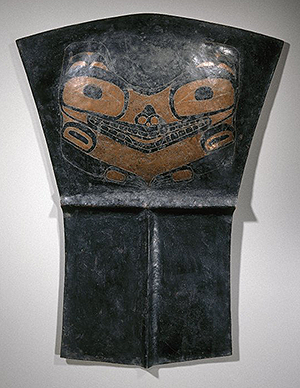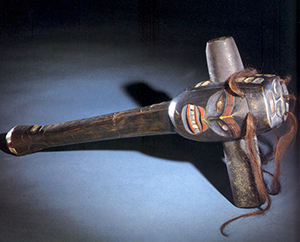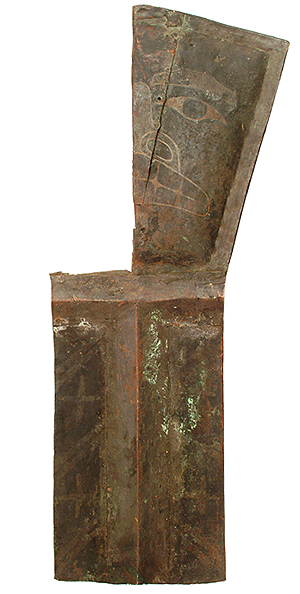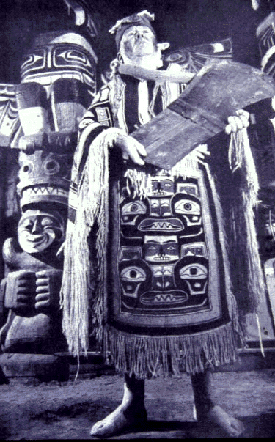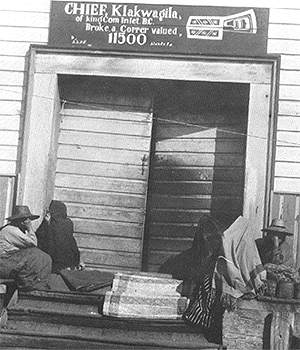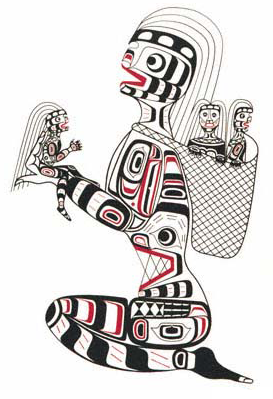
| COURSE HOME | DZOONOKWA MASKS | HILIGAXSTE' MASKS | CANNIBAL SOCIETY MASKS |
The Hamatsa Ceremony
Some useful links:
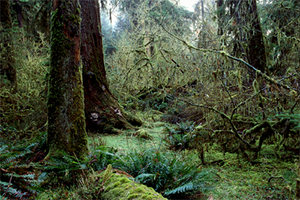
Initiates to the Hamatsa Society were taken into the forests, whence they returned fully possessed by Cannibal Woman.
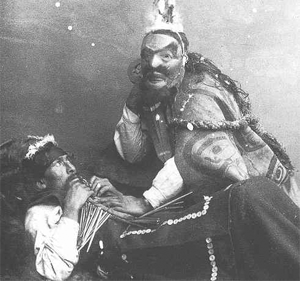
Commonly there were two ways in which to become an initiate. (1) A person could be diagnosed by a shaman as being in the early stages of possession by Cannibal Woman. (2) The initiate could inherit his position in the Hamatsa Society. In either case, a prolonged trip into the woods was in order.
Staged photo of Tlingit shawman curing a sick man taken by Edward De Groff at Sitka, Alaska, in 1889.
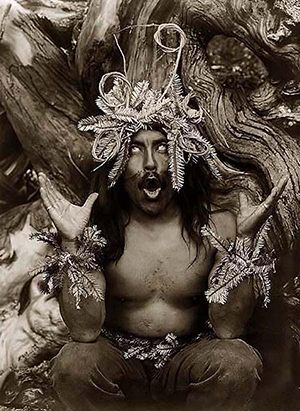
The initiate becomes the central focus of the Hamatsa Ceremony, which is the center of the Winter Ceremonies. This is the initiate in one of his manifestations, as staged by Curtis in 1914.
Home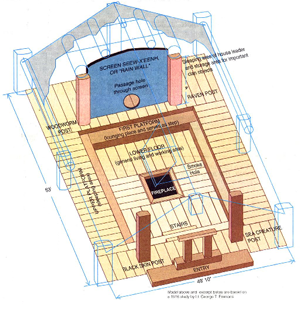
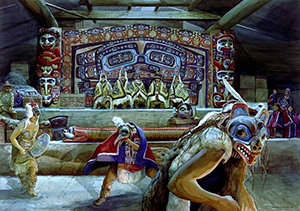
THE GREAT HOUSE
This is a model of the Great Whale House of the Tlingit. The overall interior width is 49 feet, which makes the sunken dance floor nearly 30 feet wide. This is the arena in which the Hamatsa Ceremony occurs.
Below, is a painting visualizing the interior of the Great Whale House with a dance in progress.
Home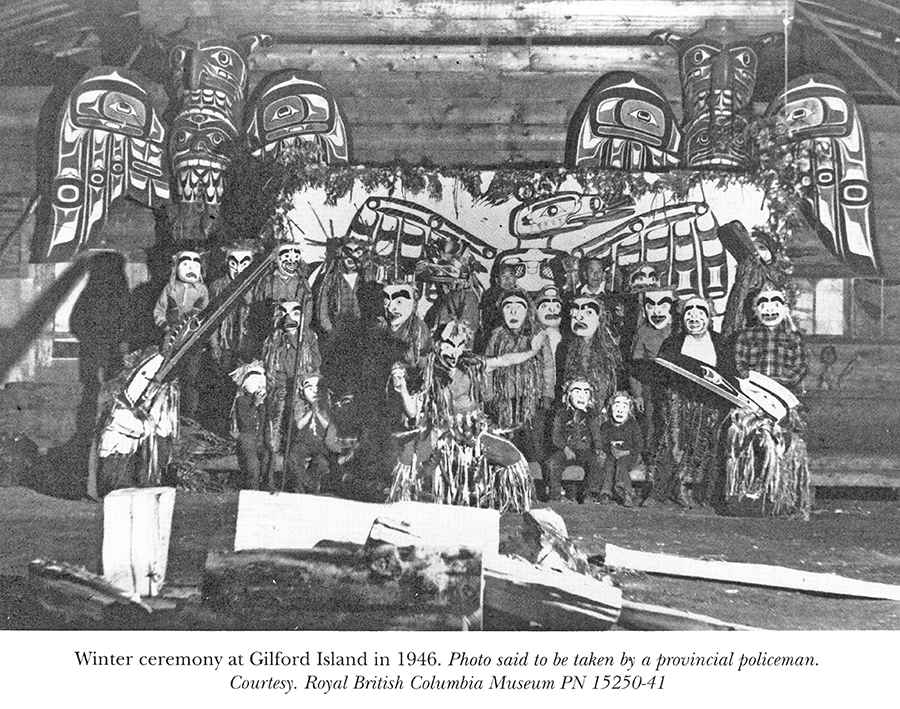
Gilford Island, 1946.
During the period from 1885 to 1953, in which potlatches and winter ceremonials were outlawed, they nevertheless still occurred, as in this example photographed by a tolorant policeman in 1946. The figures in the foreground are Hamatsa Society dancers.
Home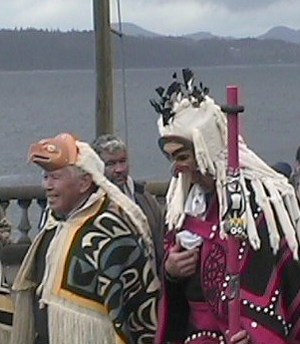
A Haida Chief and his Speaker arrive at Alert Bay. The Chief wares a forehead mask so that his face remains visible, but his speaker wares a face mask since it is not his face that is important. Rather, his staff marks him as the Chief's speaker.
Home
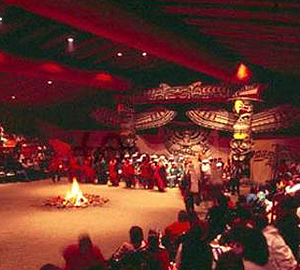
The Great House at Alert Bay.
Home
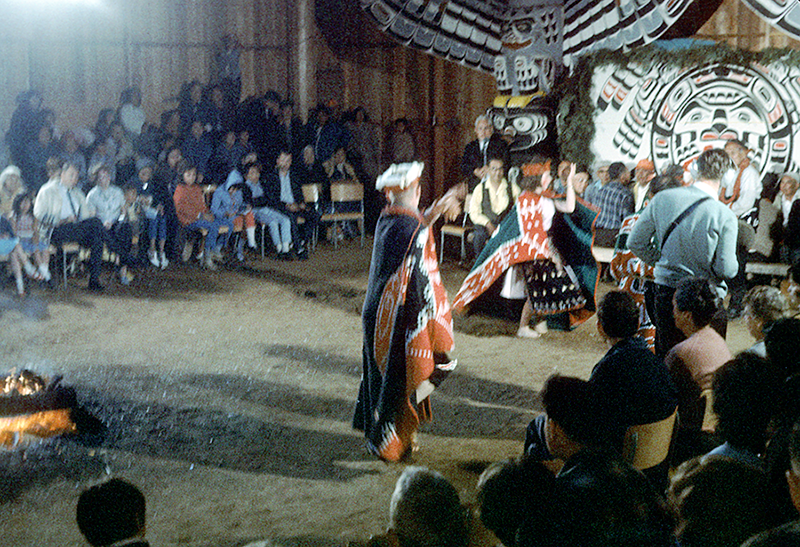
The Great House at Alert Bay.
Home
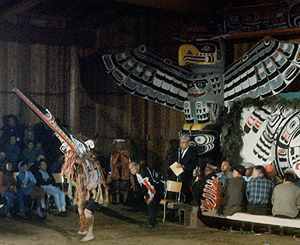
The Great House at Alert Bay.
Home
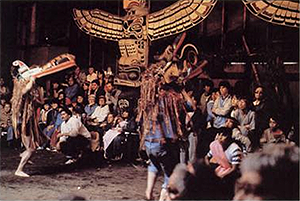
The Great House at Alert Bay.
Home
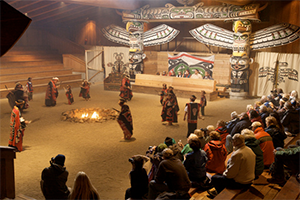
National Geographic Films at Alert Bay.
Home
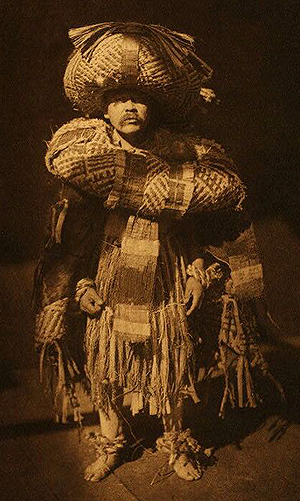
A member of the Hamatsa Society in formal regalia, which is made mainly of red cedar.
Home
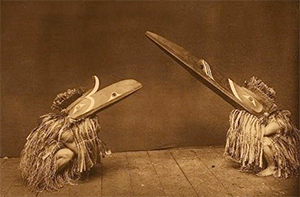
The central dancers are the Cannibal Birds, including Raven and Hok Hok, who surround the novice who is being initiated into the Cannibal Woman Society.
Home
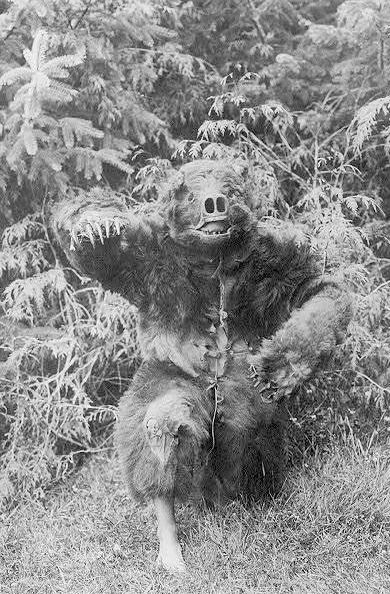
Grissly Bear dancer in full consume emerging woods. Curtis, 1910-14.
Home
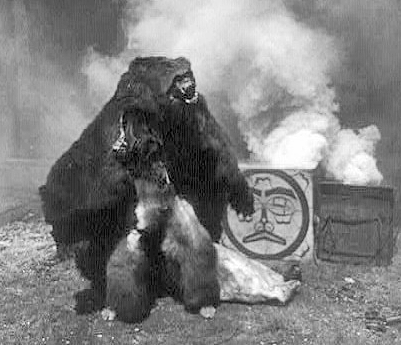
Grissly Bear on the dance floor. Curtis, 1910-14.
Home
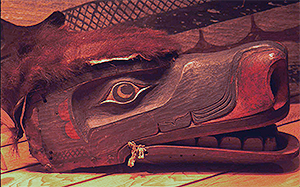
Hiligaxste' Grissly Bear forehead mask who attend the novice in the final stages of the dance. Kwakiutl, Field Museum, ca 1880-1900
Home
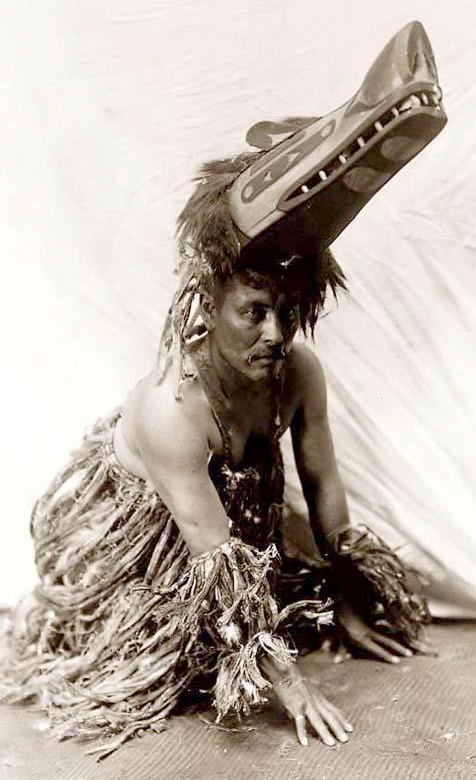
Wolf Dancer with large articulated forehead mask. Curtis, 1910-14.
Home
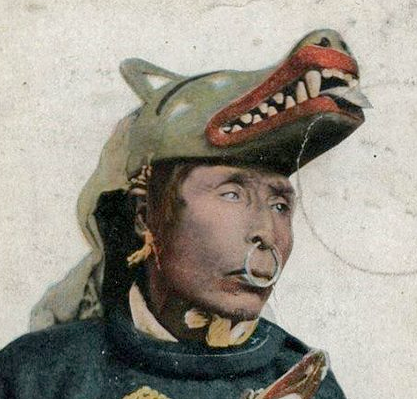
Wolf Dancer with large articulated forehead mask. Curtis, 1910-14.
Home
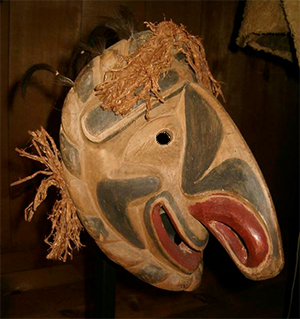
Fool Society mask. Fools help keep the peace with sticks and stones, but were also armed with more serious weapons. They might also run amok breaking property, which they had to replace after the winter ceremonies concluded. Their noses produced vast amounts of snot that they would spread on those around them.
Home
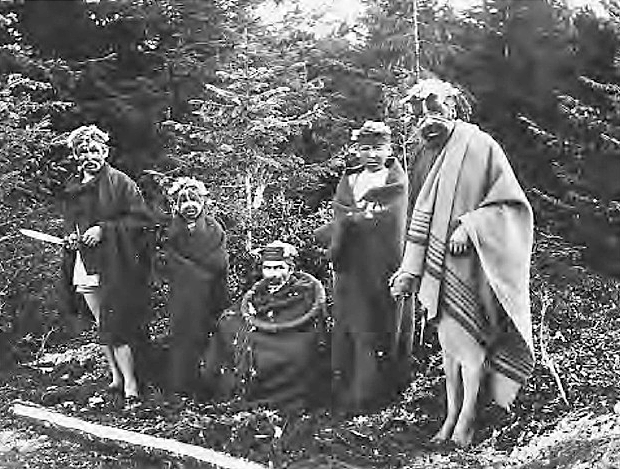
Boas (1885) As the members of a Fool Society, with the Hamatsa novice sitting in the center. Left to right: Charles Wilson, Mungo Martin, a halfbreed Frenchman, Spruce Martin (Mungo's elder brother), and either George or David Hunt. The first husbond of Mrs. Mungo Martin's first husbond was David Hunt. The halfbreed Frenchman looks remarkably like Franz Boas.
Home
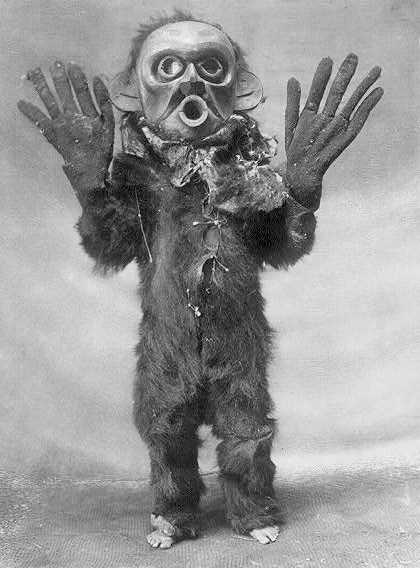
A "Dangerous Thing" in the guise of Cannibal Woman. Curtis, 1914.
Home
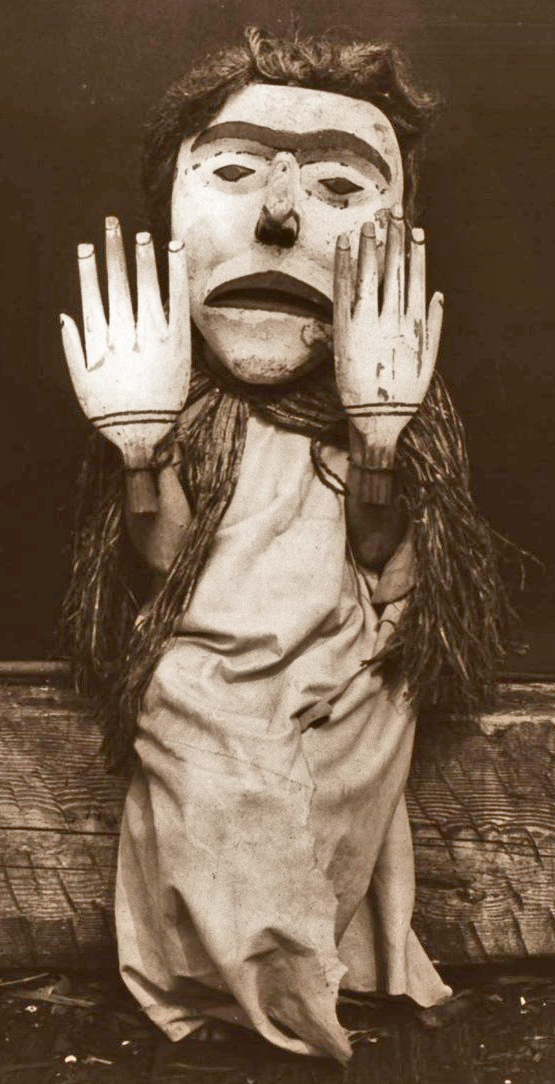
A Forest Spirit, Curtis, 1914. Anything with a white face and white hands is not of the living and potentially very dangerous.
Home
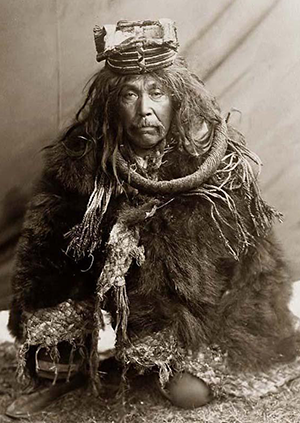
Hamatsa initiate garb after first round of dancing. Curtin 1914.
Home
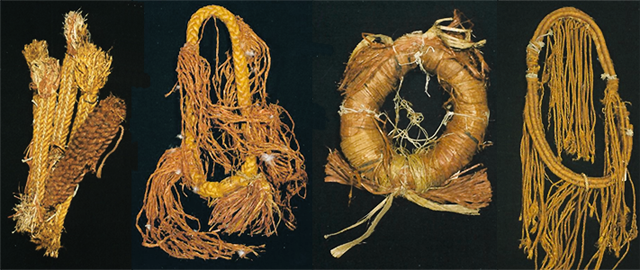

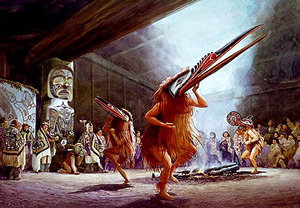
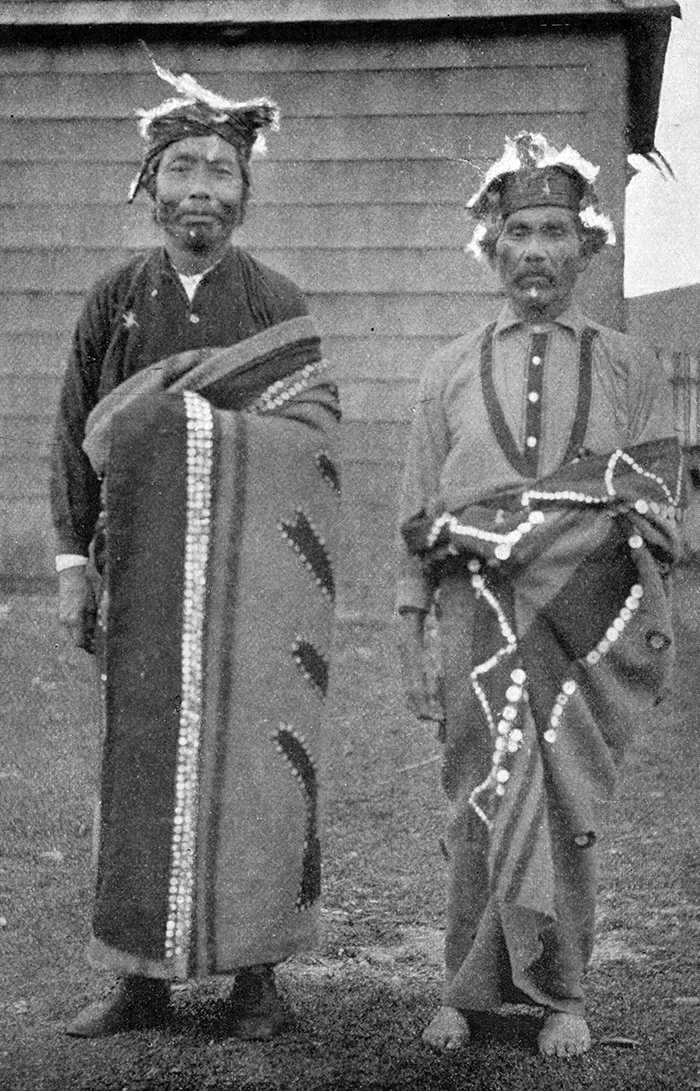
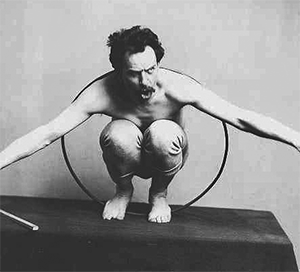
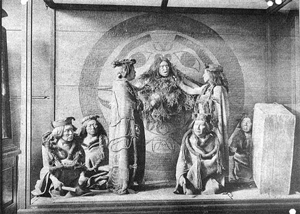
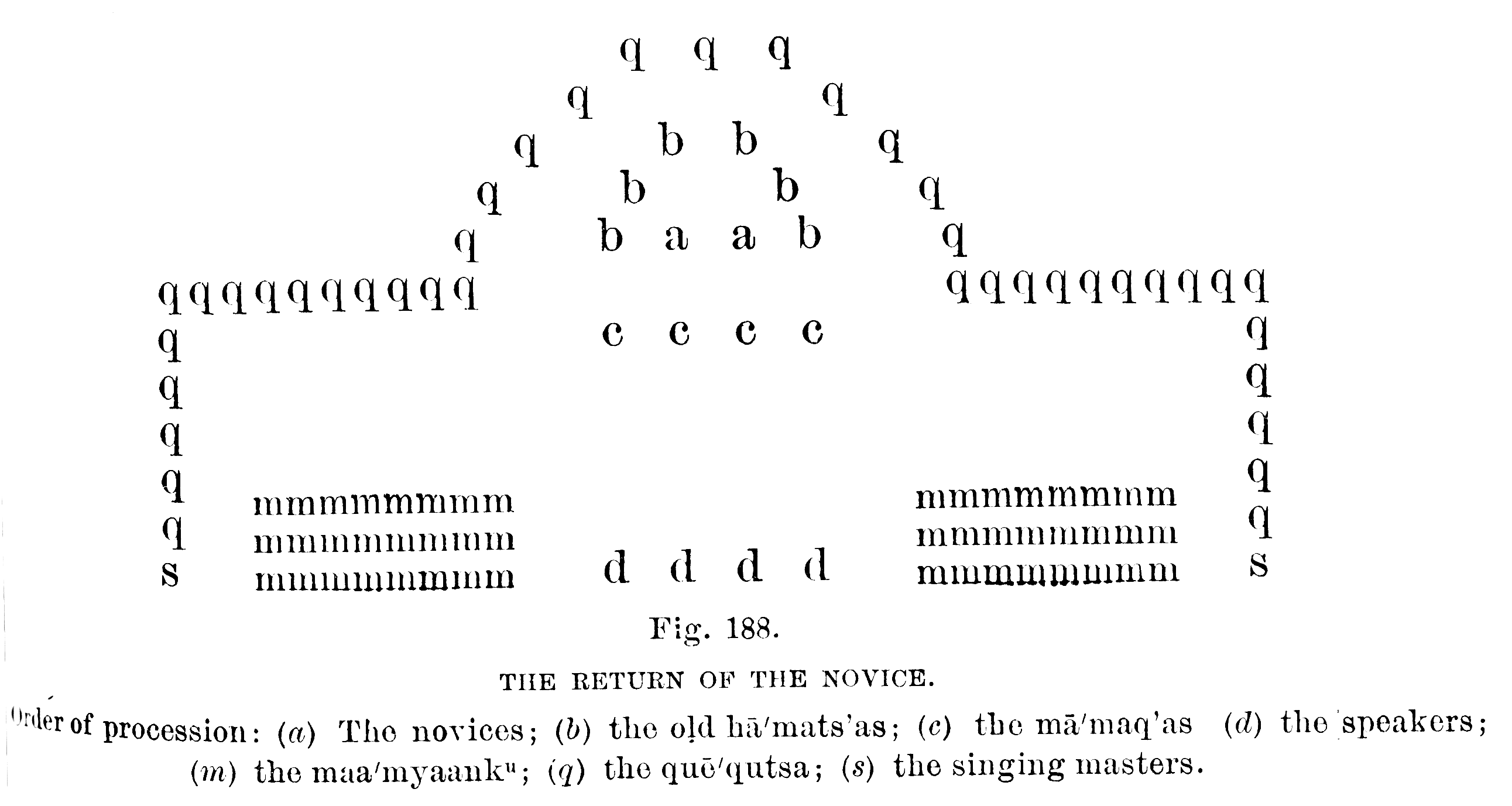 The protocol for one stage in a rather unusual Potlatch, described at length by Boas (1885).
The protocol for one stage in a rather unusual Potlatch, described at length by Boas (1885).